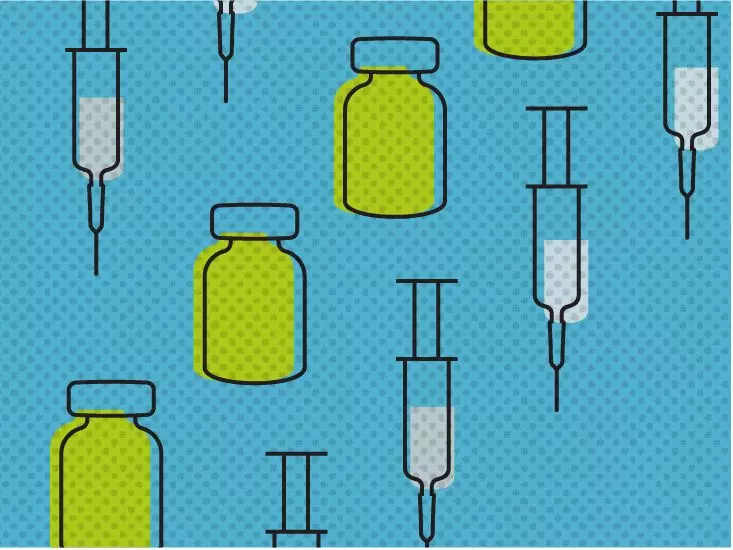Schizophrenia presents a complex array of challenges, affecting millions worldwide. These challenges are often compounded by the stigma associated with mental health, leading to inadequate treatment uptake. Fortunately, advancements in medical treatment continue to emerge, offering hope and improved outcomes for patients. One such innovation is Invega Hafyera (paliperidone palmitate), a long-acting injectable antipsychotic that promises to streamline the treatment for schizophrenia, providing a much-needed escape from the demanding schedules of traditional treatments.
Transitioning to Invega Hafyera
What sets Invega Hafyera apart is its administration schedule. Traditionally, patients have received paliperidone injections monthly or quarterly. Invega Hafyera, however, empowers patients by transforming this frequency into biannual injections—a potentially groundbreaking shift in managing schizophrenia. To initiate treatment, dosage customization arises based on one’s history with the previous paliperidone formulations, Invega Sustenna or Invega Trinza. This personalization is a critical step, considering that an effective treatment strategy should always align with an individual’s unique health profile.
The responsibility falls on healthcare professionals to determine the appropriate dosage, which not only depends on prior medication strength but also considers kidney function and the overall severity of the individual’s condition. This attention to detail encapsulates a patient-centered approach, aiming for therapeutic efficacy while minimizing side effects.
Dosage Details: The Science Behind It
Invega Hafyera is available in two strengths—1,092 mg and 1,560 mg—administered as an extended-release suspension. This extended-release formulation is particularly noteworthy, as it allows for a slow, consistent release of medication into the bloodstream, thereby enhancing therapeutic effects and diminishing the peaks and troughs commonly associated with more frequently administered doses. The science of this delivery method showcases how innovation in pharmacology can significantly influence patient experiences.
For many patients, the prospect of an intramuscular injection every six months represents more than just convenience; it translates into improved adherence with the treatment regimens. The reality is that many individuals with schizophrenia struggle with treatment adherence due to various factors, including forgetfulness or fear of injections. A significant reduction in the frequency of injections may provide some psychological relief, fostering a better relationship between patients and their treatment.
Administration Protocol: The Role of Healthcare Professionals
The administration process for Invega Hafyera is facilitated by healthcare professionals in clinical settings, which further supports patient safety. The scenario where patients receive medication under the supervision of trained personnel minimizes the risks associated with self-administration. This careful approach speaks to the overarching commitment of the healthcare system to ensure patient welfare while preserving the integrity of the treatment protocol.
All this emphasizes the importance of maintaining open communication channels with medical professionals. Patients are encouraged to actively engage in discussions regarding their treatment plans, including any concerns about side effects or the administration process. This dialogue propels a collaborative relationship, essential for achieving optimal results in managing schizophrenia.
What to Expect: Side Effects and Safety Precautions
While Invega Hafyera offers a refreshing approach to treatment, it is essential for patients to be aware of potential side effects. Adverse reactions can vary from mild to severe, and awareness can empower patients to act swiftly if they encounter any distressing symptoms. Unlike many treatments, Invega Hafyera is administered under medical supervision, thus mitigating the risk of overdose, a situation not commonly reported during clinical studies.
Nonetheless, patients must maintain an informed stance, understanding that treatment paths can shift based on their health. It’s persuasive evidence for why ongoing conversations with healthcare providers are vital; when patients report their experiences candidly, adjustments to medication can be made swiftly and effectively.
The Bigger Picture: Long-Term Impact on Recovery
The long-term outlook for patients utilizing Invega Hafyera could be transformative. By diminishing the complexity of treatment schedules and fostering patient adherence, we witness a shift that not only affects the individual but reverberates into society as a whole. The cascading effects of improved mental health within communities serve to challenge the stigma surrounding schizophrenia, fostering understanding and support.
Advancements such as Invega Hafyera symbolize more than just medical innovation—they represent a growing commitment to acknowledging and treating mental health conditions with the same gravity as physical illnesses. Embracing these strides towards empowering patients can result in profound changes in how schizophrenia is viewed and treated, paving a brighter path for future generations facing similar battles.


Leave a Reply